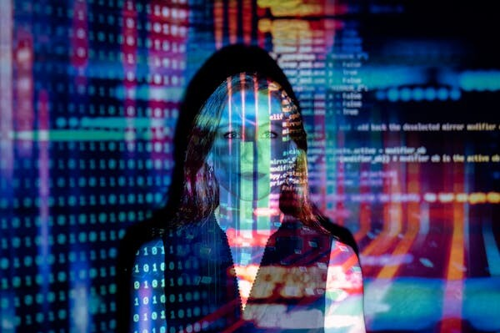5 Minutes with Francesco Ferro
Collingwood speaks with Francesco Ferro CEO & co-founder of PAL Robotics and the interest in robotics in the healthcare sector

Francesco Ferro is the CEO and co-founder of PAL Robotics, and a euRobotics asibl Board Director. He has a BSc+MSc degree in Telecommunications Engineering from Politecnico di Torino (Italy), a Master from ISEN (France) and an Executive MBA from the University of Barcelona (Spain). Since 2004 he has developed cutting-edge robotics at PAL Robotics, for service tasks and Industrial environments, as well as for R&D.
Collingwood: How has the interest in robotic solutions changed, particularly over the last two to four months? Are there any particular industries that have accelerated or brought forward their plans? What are you seeing in terms of demand?
Francesco: This is a tough question because at the moment our roboticists are involved in a variety of areas, and we run five different business units. We offer service robots and Cobot's (collaborative robots) and we do see significant demand for robots that are able to do different things. Some of the most crucial developments though, are the changes in the healthcare sector.
One solution that has had a lot of media coverage from our side is called the Fast AV (fast deployment of autonomous vehicles). Imagine a mobile robotic base that can deliver things in a hospital. This solution was deployed here in Barcelona and with very good results. The idea behind this was to have a robot that can collect packages, medical supplies and meals and deliver them around the hospital including to patients’ rooms. This can also potentially reduce the spread of infection as the robot will make deliveries in place of healthcare workers and therefore helps them to minimise unnecessary contact with patients. We also have a mobile base robot that can deliver packages in a safety box (accessed via a code) safely throughout hospitals.
Another healthcare project we are involved in, is the SPRING project. Through this project we have developed a robotic solution that will be the first filter for patients arriving at a hospital reception. The ARI robots used in this project have features such as a touch screen, and speech recognition. We are also looking at adding in a thermal camera to check temperatures and also to give the ability to speak remotely through the robot to a doctor or healthcare professional. Again, this reduces physical contact and the potential spread of the virus.
Through another project, called the SHAPES project, we are also trialling a robot that operates in older people’s homes. This provides immediate assistance through an operator than can give advice but also offer a telepresence service for family as well. In bigger cities this will cut down the reaction time for healthcare workers allowing help to be administered immediately, compared to physically travelling to a home. Through this project, we have proven that one operator can control up to 10 robots remotely that have a physical presence in older people’s homes.
We also see a trend of companies asking for additional functionality from robots that they already have. For example, our StockBot solution enables shops to have a real time view on inventory stock levels and therefore be able to order more stock before the store runs out. The additional functionality that we are looking at here is the ability for the robot to clean and disinfect items in the store that come into contact with members of the public. Again, this could help reduce the spread of the virus.
Collingwood: How important is the robot human interaction, developing the robot to be more empathetic, and more supportive, so robotic solutions are better accepted?
Francesco: I'm absolutely convinced that this is very important, so we lose focus on the fact that it is a robot that we are interacting with. So, we are constantly following conferences around the world on social robotics, human interaction, and collaborating with people. What we have learnt is that robots that appear more aesthetically ‘human’ are helping improve our perceptions of our first experiences with a robot. With regards to appearance, we love to interact with something that is familiar to us.
We started PAL Robotics in 2004, more than 15 years ago. Our first development was to work on speech recognition, and visual detection of people. Then we put this work on hold for a while because there was a lot of noise in speech recognition, for example, in open and dynamic environments like supermarkets and shopping centres, where robotic solutions were more complicated because of the amount of ‘noise’. For this reason, we introduced touch screens in order to submit the right answers to the robot. We are collaborating now with more and more institutions and universities to develop speech recognition and interactions with robots. For example, regarding integrating AI algorithms, we are part of Open DR (Deep Learning Robots), a European project which started this year and is focussed on developing a large database of algorithms with use cases of robots using Deep Learning for Robots. The plan with this research is that in future we’ll all have access to these algorithms and we will be able to integrate the best algorithms from the best minds.
Collingwood: As the CEO of PAL robotics, what are your personal biggest challenges at the moment and the challenges for PAL robotics?
Francesco: There are a lot of challenges but the first one is making things happen and improving every day, which means continuous development of all of our robots and use cases. We have felt since the beginning, that there's a big gap between the high technology innovation, done in universities, and the real solutions in the real world. Our role is to try to take all of this innovation and use it in the real world.
And there's plenty of work for a lot of people to make these things happen, because everybody is talking about robots. So, having the enough people in the team is a challenge. Our main role and challenges are to develop real use cases in order to help humans in their daily lives. Robots are very useful in order to help us to make things better. And, talking again about the store and the StockBot robot, the market is constantly changing now due to the pandemic. We are trying to develop disinfection robots to provide a solution that will help save lives, because this is something we can do.
We are very, very open to collaboration with others that have different perspectives in robotics. Because in robotics, there are so many things that could be done through collaboration between robotics companies around the world.
Collingwood: For you personally, what is your dream vision for the use of Robotics in the world?
Francesco: First of all, with seeing robots operating outside of traditional confinements (more common and accepted nowadays), I’d like to see robots helping us in our daily lives, this is my dream, robots with clear applications. If it's in my house, I would be delighted if robots help with day to day tasks!




